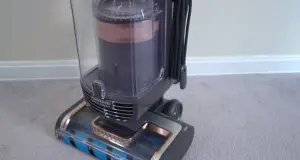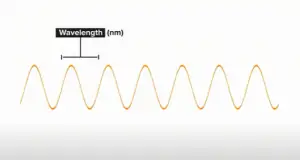Learn about What type of Plastic is Used for Vacuum Forming?
What kind of plastic is utilized in vacuum forming? This is a question pondered by numerous individuals when they consider the variety of plastics available.
Polystyrene and polycarbonate are two popular options. But, what do you need to know about them before deciding which one to use? In this blog post, we will discuss both and give you some more information on how they compare to make an informed decision.
What is Vacuum Forming?
Vacuum forming is converting flat sheets of plastic into 3-dimensional forms by using thermal heating. A VF machine is used for this.
Let’s take a closer look at the basic vacuum forming technique.
- You must follow these steps to use a vacuum forming machine:
- The plastic should be heated to a state where it can be molded. The range is between 100 and 225 degrees Celsius.
- Lay the plastic on a mold, usually constructed of wood, machined aluminum, or structural foam.
- Pull the plastic sheet tightly against the mold using vacuum pressure.
- After molding, set the plastic in its new form by chilling it.
Male vs. Female Molds
When making a female mold, you start with the male part and then cut or grind away what is unnecessary. For example, if you are trying to make a handle for a cup out of plastic using vacuum forming, you would first make the bottom and sides. After that, cut along all edges where it meets other pieces.
On the other hand, creating a male mold will require more work. It involves adding material after cutting down an existing piece. You must use another process such as casting to add materials like concrete or cement into thin molds made from wood or aluminum.
What type of plastic is used for vacuum forming?
Here are the types of plastics that can be used for VF:
1- Polycarbonate
Polycarbonate is a thermoplastic material made from resin. It is used in the automotive, construction, and consumer electronics industries because it has high impact resistance properties.
Polycarbonates are transparent to visible light with the good transmission of infrared radiation. They also have low moisture absorption, which means they don’t corrode easily or absorb water when exposed to humid conditions.
2- Polystyrene Sheeting (HIPS)
Polystyrene is a unique plastic that has excellent insulation properties, along with high impact strength and rigidity. It can be extruded into many different forms, including solid rods or sheets used for signage applications.
Polystyrene comes in two types: expanded polystyrene (EPS) and rigid polystyrene (R-PS). EPS is most widely used because it is lightweight yet strong enough to use as thermal insulation for refrigerated trucks. On the other hand, R-PS is more suitable for large commercial signs due to its dimensional stability when exposed to heat over long periods.
3- Acrylonitrile Styrene Acrylate (ASA)
ASA is a blend of three thermoplastics with high impact resistance, dimensional stability, and stiffness. ASA has excellent optical properties, making it ideal for signage applications where the colors will be seen up close by customers.
It has excellent weather resistance and is therefore perfect for applications such as caravans and boats. ASA also has an advantage over other plastics in terms of abrasion and chemical resistance.
Benefits of Vacuum Forming
There are many benefits in using vacuum forming for your next project with these and other types of plastics to choose from. These include:
- Ability to produce large quantities quickly and easily.
- Ability to use a wider range of materials such as metals, styrene sheets, or ABS plastic pieces.
- Expands the capabilities of what you can do with plastic parts making it great for prototyping work.
Vacuum Forming vs. Other Methods
When deciding how best to form plastic into different shapes and sizes, one must consider where they need their part used most before choosing which method is right for them.
Below we compare some common methods and discuss which would be better suited depending on the application.
1- Air Press
This process involves placing a sheet of plastic onto a male mold. A vacuum pump then draws the air out from between the two surfaces.
This method is most commonly used in production lines. It is where the larger quantities are required, and speed is important, such as making commercial signage.
The primary disadvantage when using this technique is that it requires more setup time than other methods. It is because you need to create both parts while on the other hand only one half (male or female) needs to be made before use can begin.
2- Thermoforming
This process works by heating a sheet of the thermoplastic film until it is malleable enough to conform around any object placed inside like molds easily. Once cooled, the thermoplastic will retain its new shape.
This method is typically used in manufacturing parts that require large numbers with precise and accurate dimensions.
The biggest disadvantage when using this technique is that it requires multiple molds per part (one for each side). So, the setup time can be slow depending on how many you intend to make at once. Also, there’s less contact between plastic and mold than vacuum forming.
3- Injection Molding
This process uses a mold to create your final shape with molten plastic injected into the cavity. After cooling, it is ejected from the part, and any excess material is cut off for a completed product. This technique can produce small parts with intricate details in mind, such as gears or cogs.
The biggest disadvantage of injection molding is its expensiveness due to having multiple molds. Besides that, you may require extra equipment just to run production, which all add up quickly.
Is Vacuum Forming Expensive?
Vacuum forming’s greatest advantage is its cost-effectiveness. Well the machinery itself is a financial investment, so you can use it to create multiple items.
Furthermore, once molds are built, you can reuse them to manufacture goods or components at low costs. It makes vacuum forming one of the most cost-effective ways to make plastic.
Final thoughts
Vacuum forming is a very efficient method of plastic production. It is fast, low-cost, and can manufacture products with precise finished dimensions. We hope that you also understand what types of plastic are used for vacuum forming. So, you can choose which suits you the most.




